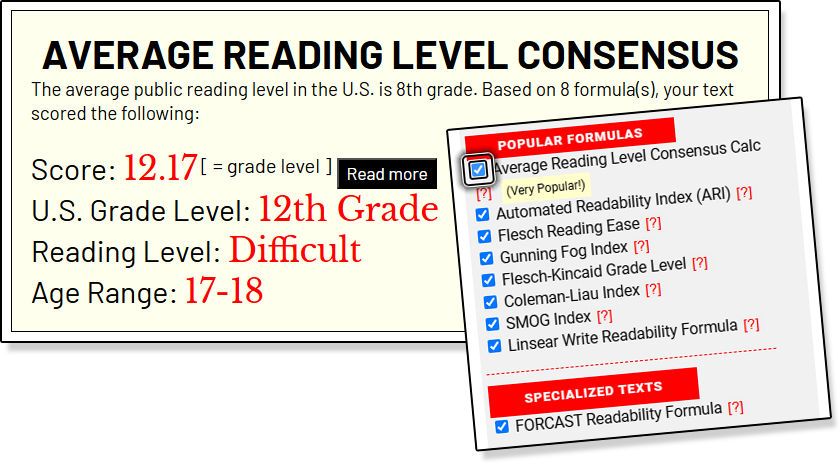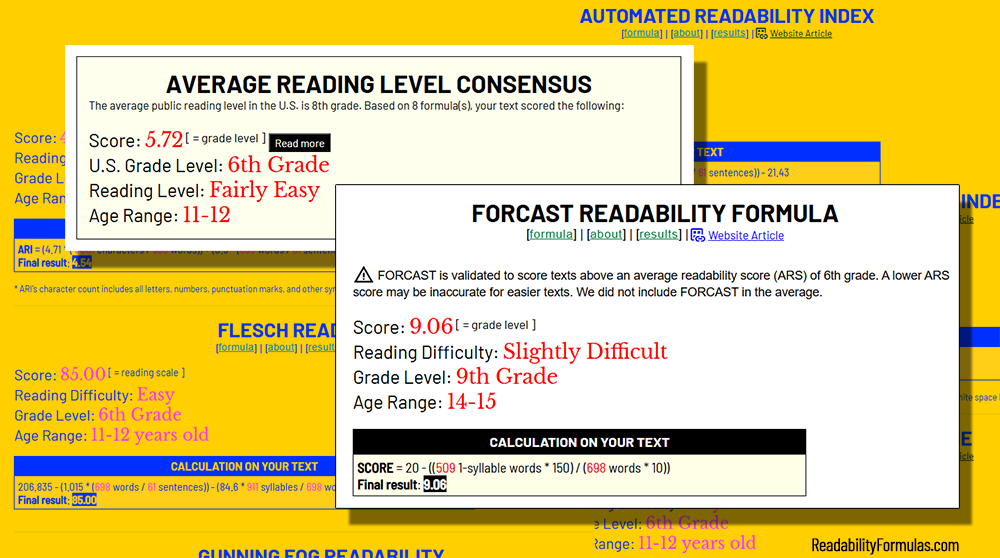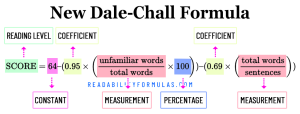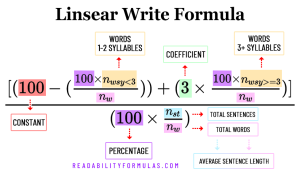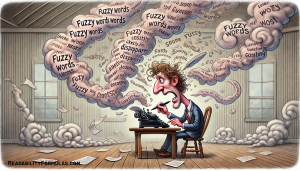Readability formulas share a common goal: to analyze text and determine who can read it. But sometimes formulas don’t always agree with one another. Scores can differ by 1-2 grade levels, even more on harder texts. This happens because formulas apply different weights to their input factors.
For example, Flesch-Kincaid weighs syllable counts and sentence length differently than the Gunning Fog Index, which weighs complex words more heavily. The Dale-Chall formula emphasizes less on sentence complexity and more on vocabulary.
Each formula approaches readability from a different angle, whether it’s weighing sentence length, syllable count, or word complexity. These nuances reflect how readers perceive difficulty: some struggle more with long sentences, while others find technical vocabulary challenging. These weights and coefficients reflect the formula’s notions about what makes text harder or easier to read.
When you need to take the guesswork out of a score, you can use the Average Reading Level Calc (ARLCalc)—it’s a tool (not a readability formula) to normalize scores. (Normalization is a way of adjusting different values so we can compare or combine them more accurately.)
Our ARLCalc scores your text with up to 11 popular formulas and outputs a single score based on an average. The averaged score is more reliable and useful because it accounts for multiple aspects of reading difficulty.
The formulas include:
Automated Readability Index (ARI):
Purpose: To estimate the grade level required to understand a text.
For: Military use, later expanded to educational and general texts.
Why: It’s efficient for evaluating both digital and print texts using characters, words, and sentence length.
Flesch Reading Ease: Purpose: To rate how easy or difficult a text is to read.
For: Originally developed for use in the U.S. Navy, now used broadly in education and publishing.
Why: It helps writers adjust content to meet target audience reading levels, especially in public communication.
Gunning Fog Index:
Purpose: To measure readability in terms of U.S. school grade level.
For: Business writing and general communication.
Why: Designed to ensure clarity, especially in texts meant for a broad audience.
Flesch-Kincaid Grade Level: Purpose: To provide a specific U.S. grade level score.
For: U.S. military and later used in education and publishing.
Why: It simplifies Flesch’s original Reading Ease score into an easy-to-understand grade level.
Coleman-Liau Index:
Purpose: To estimate the readability of text by focusing on word length.
For: U.S. Army use, later applied to general texts.
Why: It’s simpler to apply for digital processing, focusing on the number of letters per word instead of syllables.
SMOG Index: Purpose: To predict the number of years of education needed to comprehend a text.
For: Health communications and public information.
Why: It ensures important documents are accessible to the intended audience by emphasizing word complexity.
Linsear Write Formula:
Purpose: To assess readability for technical manuals.
For: The U.S. Air Force.
Why: Created to ensure that military personnel could quickly and easily understand instructions.
FORCAST Readability Formula: Purpose: To estimate readability in technical and medical texts.
For: U.S. Army, then adopted for other specialized fields.
Why: It’s specifically designed to work well for texts with short, technical words by focusing on one-syllable words.
Dale-Chall Readability Formula
Purpose: Measures readability by comparing words in the text to a list of familiar words known by 4th-grade U.S. students.
For: Education, textbook publishing, and evaluating materials for younger or less proficient readers.
Why: Highlights texts with unfamiliar vocabulary, helping writers adjust word choice for reader comprehension.
Fry Sight Readability Formula Purpose: Calculates readability by analyzing the percentage of unfamiliar sight words and average sentence length.
For: Education, especially for evaluating children’s reading materials and early literacy programs.
Why: Combines word familiarity and sentence complexity to match reading materials to appropriate grade levels.
Spache Readability Formula
Purpose: Assesses readability for texts aimed at young children by focusing on unfamiliar words and sentence length.
For: Elementary education and evaluating materials for early readers (below 4th-grade level).
Why: Helps ensure beginner readers aren’t overwhelmed by complex vocabulary or long sentences.
How Averaging Keeps Readability in Check
Averaging readability scores with ARLCalc is useful for several reasons:
1. Balances Formula Differences
Each readability formula emphasizes different aspects of text complexity—sentence length, syllable count, word familiarity, etc. Averaging reduces the impact of any single formula’s bias. For example, one formula may overestimate difficulty due to sentence length, while another may focus more on vocabulary. Averaging balances the estimate of overall difficulty.
2. Smooths Out Extremes
Some formulas may score higher, especially for specialized texts. Averaging smooths out extreme values and estimates a more reasonable score.
3. Average Grade Level
Since formulas emphasize different aspects of text readability, averaging helps to reach a “consensus” grade level that reflects the text’s overall difficulty. This gives a more holistic view of how accessible a text is for a general audience.
4. Works Across Different Texts
Some formulas are better suited for specific texts (e.g., Dale-Chall for grade-level textbooks, Flesch-Kincaid for general reading). Averaging scores makes it easier to apply the final result to a wide range of texts. It reduces the risk of skewing the final score that isn’t well-suited for the particular text type.
5. Reflects Real-World Reading
Readers engage with texts in different ways. Averaging the scores normalizes cognitive load levels, allowing the writer to predict how most readers will perceive the text’s difficulty.
6. Consistency
Formulas use different scales (e.g., one from 1-12 and another from 0-100). ARLCalc aligns them so it can compare and average the results.
Our Readability Scoring System (RSS) automatically includes the average of all scores from any combination of formulas, not just the pre-selected ones. This means users can add Dale-Chall, Spache and Fry Sight formulas with other formulas.
RSS also ensures scores outside a formula’s validation range is not averaged in with the other scores. For example: if the user selects the FORCAST readability formula and a text scores an average readability level of 5th grade, the FORCAST score is not added since it is validated to score texts above 7th grade.
Scott, Brian. “How to Normalize Readability Scores with the ARLCalc Tool.” ReadabilityFormulas.com, 8 May. 2025, https://readabilityformulas.com/how-to-normalize-readability-scores-with-the-arlcalc-tool/.


